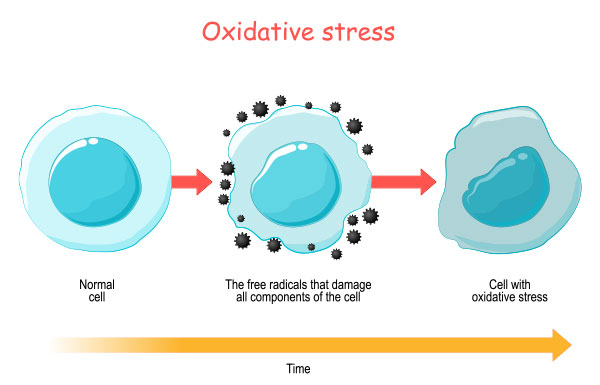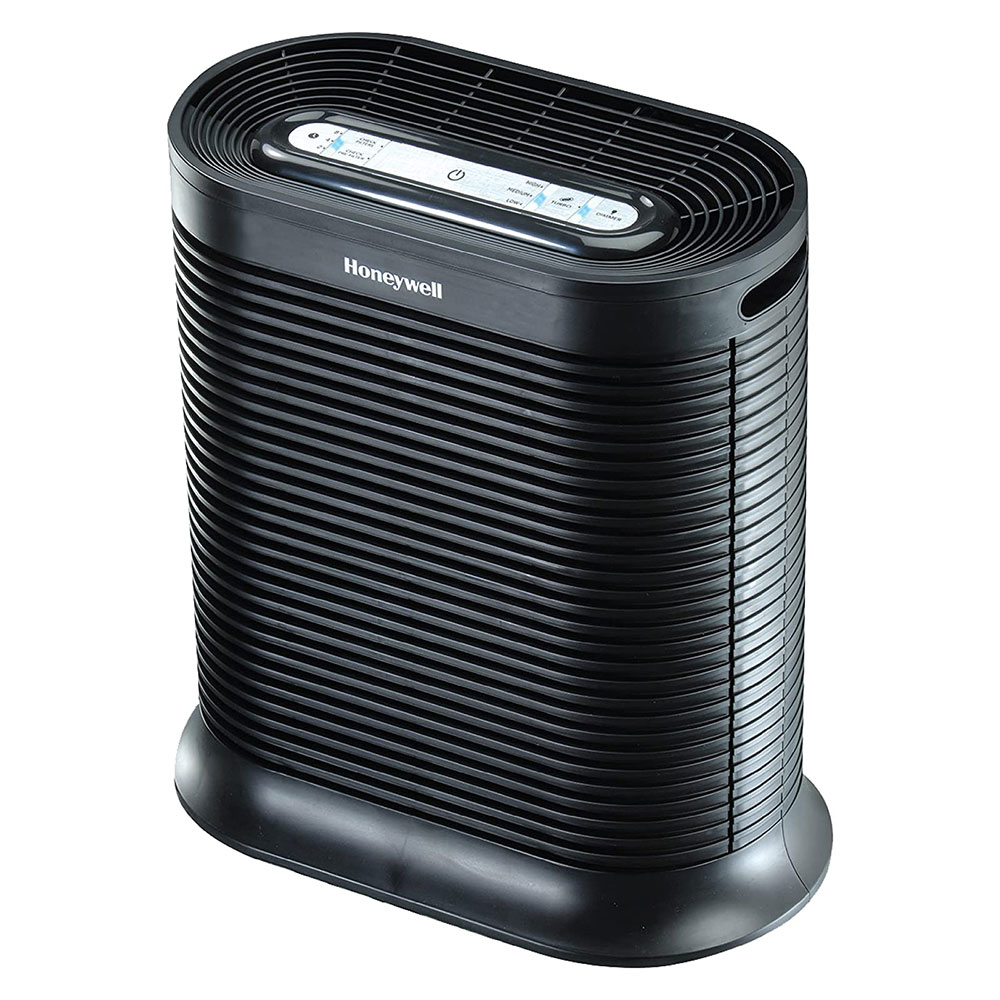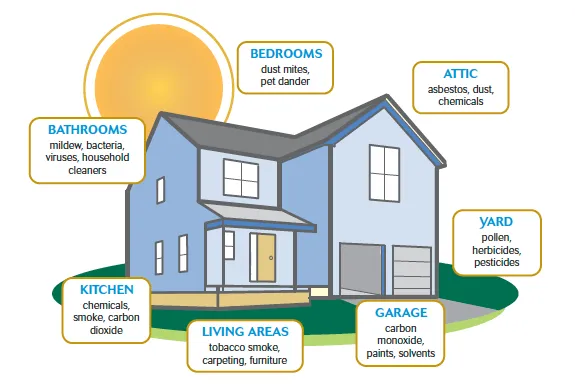Indoor environmental air pollution can have unfavorable physiological effects upon home owners, largely because individuals tend to spend 90% of their time at home.1 Although natural ventilation can help evacuate harmful particulate matter, outdoor air can often contain more xenobiotics than inside the home.1(1) Such instances demand interventions that can filter indoor air in an efficacious manner. As a means of appreciating unfavorable airborne household substances on health, and solutions to improve air quality, the following will explore the same.
Homes often contain a plethora of airborne substances that have no positive physiological benefit to owners. A major source of air pollution, that inevitably migrates inside homes, includes outdoor air contaminated with exhaust fumes from traffic.2 Interestingly, a strong association exists between homeowners living near highways and the incidence of cardiovascular disease and asthma.2(2) Furthermore, other substances that can aggravate health include microorganisms, microbial cell debris, and allergens.2(2) Finally, volatile organic compounds (VOCs) found in renovation (i.e., wood, insulation, paint, flooring), personal care products, and consumer products (i.e., cleaners, solvents, deodorizers) have also been documented with some VOCs known to be carcinogens and endocrine disruptors.3,4

Airborne particulate matter (APM), like exhaust fumes, has been shown to have both short-term and long-term consequences to include increased systemic oxidative stress and inflammation; processes that can induce damage to cellular components such as lipid membranes, DNA, enzymes, and receptors.5,6 Considering that oxidative stress and inflammation can have a profound capacity to affect the most basic functional unit of an organism (i.e., the cell), it has been postulated to be a causative factor in several disease states to include atherosclerosis, Alzheimer’s disease, neuronal injury, and toxicity.6(515) As such, interventions that help improve air quality is critical. One particular air purification system is known as high efficiency particulate air (HEPA) filtration.

HEPA filters are designed to capture particles as small as 0.3 microns, effectively removing 99.97% of particulate matter in the air.7 Several research studies have supported the efficacy of using HEPA filtration systems to include work by Kajbafzadeh et al5(397); the researchers analyzed the APM inside 44 homes before and after using HEPA filtration systems. Results indicated a 36-48% reduction in traffic related air pollution and wood smoke, respectively.5(397) Norris et al3(265) noted an average reduction in VOCs of 30% among 20 households using HEPA systems. Microbes, such as fungal spores, were also dramatically lowered using HEPA air purification systems in a sample of 21 homes by Cox et al.2(1) Ultimately, HEPA can help control the concentration of VOCs, APM, and microbes.

Indoor and outdoor air pollution can have unfavorable physiological effects upon home owners, largely because individuals tend to spend 90% of their time at home. VOCs, microbes, and APMs from traffic contribute to compromised air quality, increased oxidative stress, and inflammation. However, HEPA air filtration systems can help control concentrations and propagation of such substances. When used as part of a larger and more inclusive intervention, such an approach has the capacity of supporting individuals’ health and overall quality of life.
References
1. Cai J, Yu W, Li B, et al. Particle removal efficiency of a household portable air cleaner in real-world residences: A single-blind cross-over field study. Energy and Buildings. 2019;203:1-10. doi:https://doi.org/10.1016/j.enbuild.2019.109464.
2. Cox J, Isiugi K, Ryan P, et al. Effectiveness of a portable air cleaner in removing aerosol particles in homes close to highways. Indoor Air. 2018;28(6):1-19. doi:10.1111/ina.12502.
3. Norris C, Fang L, Barkjohn KK, et al. Sources of volatile organic compounds in suburban homes in Shanghai, and he impact of air filtration on compound concentrations. Chemosphere. 2019;231:256-268. doi:https://doi.org/10.1016/j.chemosphere.2019.05.059.
4. Paciencia I, Rufo J, Silva D, et al. Exposure to indoor endocrine-disrupting chemicals and childhood asthma and obesity. Allergy. 2019;74(7):1277-1291. doi:10.1111/all.13740.
5. Kajbafzadeh M, Brauer M, Karlen B, et al. The impacts of traffic-related and woodsmoke particulate matter on measures of cardiovascular health: A HEPA filter intervention study. Occup Environ Med. 2015;72(6):394-400. doi:10.1136/oemed-2014-102696.
6. Lord RS, Bralley, JA.Laboratory Evaluations for Integrative and Functional Medicine. 2nded. Duluth, GA: Genova Diagnostics; 2012.
7. Liu G, Xiao M, Zhang X, et al. A review of air filtration technologies for sustainable and healthy building ventilation. Sustainable Cities and Society. 2017;32:375-396. doi: https://doi.org/10.1016/j.scs.2017.04.011.
-Michael McIsaac


